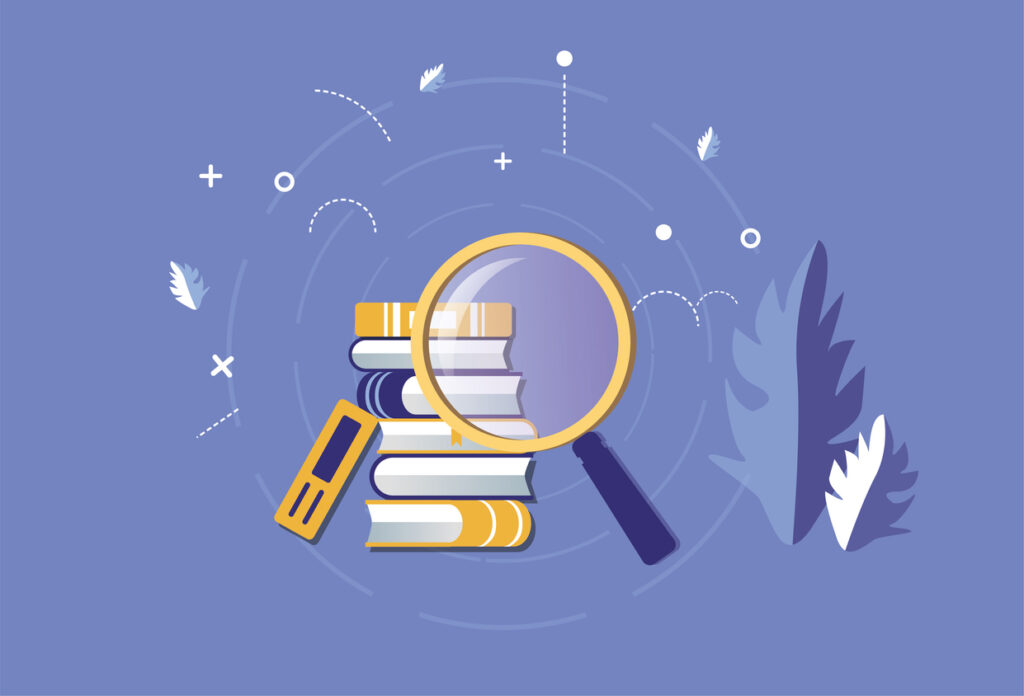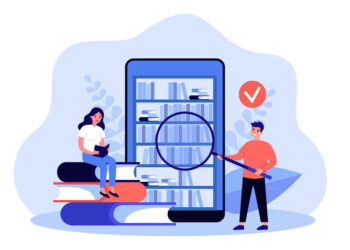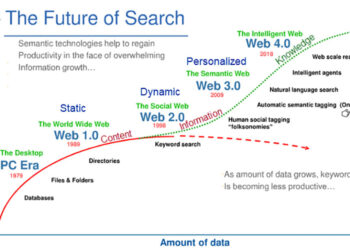As AI innovations advance the search and analysis of scholarly literature, libraries continue to invest in services that offer web-scale search for institutional holdings. NISO’s Open Discovery Initiative (ODI) recommends best practices in the implementation of pre-indexed discovery tools for all stakeholders. This includes a framework for libraries, publishers, and service providers to issue “conformance statements” declaring their adherence to ODI principles.
As a long-time champion of the ODI standards, I keep tabs on how our community is responding to this framework for improved cross-sector transparency and collaboration in shaping scholarly discovery experiences. ODI statements have been released by dozens of academic libraries and content providers, so it was high time to check in with the technology vendors for library discovery services to see how they’re responding to these industry expectations.

I had the pleasure of catching up with experts in three leading vendor organizations this spring, who provided insight into how their organizations are addressing ODI recommendations:
- EBSCO: Scott Bernier, Vice President, Library Relations
- Ex Libris (Clarivate): Amy Pemble, Director, Product Management
- OCLC: Jay Holloway, Director, End User Services, Global Product Management
What value does releasing an ODI conformance statement bring to your organization?
Jay: The ODI Conformance statement gave the OCLC discovery teams a chance to evaluate the overall scope of our discovery service and data ingest processes for libraries. Our ability to offer a discovery tool to our member libraries is completely dependent on content provider collaboration with the requirements of ODI. We hope that this statement will continue to show the value in supporting open discovery through our discovery services. As a global nonprofit with a mission to share credible, authoritative information, ODI fits perfectly with our mission.
Scott: The ODI conformance statement is an example of community participation and transparency. We believe in the value that NISO brings, not only through standards, but as a facilitator for aligning our libraries, service providers, and publishers toward successful outcomes that require each party to play a role. We’ve been involved in ODI since the beginning. It’s a strong example of identifying a need and rallying the community toward greater visibility and awareness of what we can do to address the associated challenges.
Amy: Ex Libris, part of Clarivate, is committed to promoting collaboration and transparency among content and discovery service providers, and supports the recommendations of the National Information Standards Organization (NISO) Open Discovery Initiative (ODI).
Being open is one of our core values; one we put into practice through extensive collaboration and transparency with our community. Because our values center on collaboration and transparency, we incorporate user expertise, opinions, and experience to shape and perpetually innovate radical solutions for the libraries of tomorrow, today.
The Open Discovery Initiative defines standards and best practices to make our commitment real for libraries worldwide. A public ODI conformance statement enhances trust and accountability with our library community partners. Publishing the capabilities of our services provides transparency to libraries and content providers and reinforces our commitment to open collaboration with both cohorts.
At Ex Libris, our content operation processes and discovery service architecture, are designed to not influence or present any bias toward any platform or vendor. The principles of content neutrality, non-exclusivity, and comprehensive indexing guide us. We are proud to have participated in the early discussions leading to this initiative becoming a recommended practice to provide libraries the transparency and configurable options to ensure that all pertinent resources are exposed and accessed using fair and unbiased linking.
Did working through the statement bring any unexpected benefits?
Scott: In completing the conformance statements (as both an information provider and a discovery service provider), as well as in taking part on the ODI committee through the years, it became clear that as a community, we would benefit from transparency, recommended practices, and potentially standards around related issues that are not necessarily the focus of ODI. The larger idea at play here is the ability for a library to select the components (software/content/etc.) that it desires within its resource ecosystem and know that it will be supported regardless of the components selected/choices the library makes. In other words, various elements across disparate resources can interoperate regardless of provider or platform.
This relates to the ideas of open infrastructure, open interoperability, open sharing, and open APIs. Along these lines, we have seen NISO members vote in a new program called the “Open ILS Initiative,” which will address related concepts in a forthcoming working group. The Open ILS Initiative will again aim to align parties across our community through participation, transparency, and some level of consistency/standardization around the need for open interchange.
Jay: As publishers stated in past posts, it was impressive to see the number of people and their depth of expertise required to answer these questions. Supporting a discovery tool is a highly specialized endeavor that requires many moving parts to all work together in harmony – if any part of our process breaks on the way to getting the end user to information, the whole process fails to deliver the content to users. Ingest, modeling, normalization, enrichment, indexing, relevance, data services, linking, and user interfaces all have requirements that inform each other, and each part has a team of people that need to collaborate to build the experience for users.
Have there been any long-term impacts of doing this work (internal workflows/tools, conversations with other stakeholders, etc)?
Scott: Absolutely. The larger idea of “open,” for us, has become a major driving factor in what we do as a company. We believe that the many examples that would be considered under the umbrella of “open concepts” will allow our broader community to grow and thrive. These concepts spark innovation and invite new entrants into our community to bring new and greater value. While it’s simple to say, “if libraries succeed, we all will succeed,” the difficulty is in each of us thinking larger than ourselves to accomplish this. The way we consider our approach and role in the community has evolved. We want to be a catalyst for innovation and change that will enable a flourishing community in the long run. Supporting open concepts such as those highlighted via ODI, and NISO’s new Open ILS Initiative, and more broadly via open-source communities, and open sharing models, for example, would seem to set the stage for a brighter future for libraries.
Jay: In the years since submitting this statement, we have made several changes and have added many items to our roadmap to increase visibility into our aggregation of data. This has supported faster development, higher quality metadata, and therefore a more valuable discovery experience. While writing the conformance statement was not the sole driver for this work by any means, it certainly helped to identify a starting list of requirements.
Amy: The long-term impacts of working through ODI conformance are myriad. The ODI principles bolster our commitment to fair and neutral content access, and they have also deepened our working relationships with both libraries and content providers. For example, we now publish a monthly coverage report for the Central Discovery Index, allowing discovery partners to review indexed collections and associated metadata like resource type and coverage percentage.
We vastly reduced the complexity and friction required of providers to contribute content to the Central Discovery Index by forming a talented Provider Relations team. This team defines and publishes best practices and works hand-in-hand with providers. As a result of those successful working relationships, we have been able to deliver innovative, cooperative technologies like Quicklinks. While OpenURL-based linking has always been key to providing good linking capabilities, Quicklinks takes user convenience and linking to a new level. We look forward to including more providers in this program.
What did it take for your organization to work through the conformance process? Were there any challenges? How did you overcome them?
Jay: Many of the data questions were challenging to answer, and some still don’t have easy answers. For example, one of the requirements to report the percent of ‘free to read’ articles is valuable, but that data in that specific format is not broadly available for data ingest. Therefore, we need to look at alternative labeling and open access indicators to determine what ‘free to read’ articles are available. This highlights that as data needs change and evolve, the ODI initiative needs to continue to evolve to support ongoing needs. And, we need libraries to require and enforce these requirements through their contracts, feature requests, and other tools to help drive the prioritization of these decisions through the organizations that support them. If libraries are not asking for the changes to be made visible through their systems, there will be little incentive for all organizations and people to work together to meet them.
Amy: Working through the ODI conformance report required cooperation across multiple teams and with various types of stakeholders, e.g. Content, Provider Relations, Discovery, and Support. Where we couldn’t definitively say “Yes” to a recommendation, we challenged ourselves to define a solution or different approach to existing practices. In interrogating our workflows, we improved our partnerships with libraries and content providers to further the goal of making content maximally discoverable and accessible.
Scott: The conformance statements went through our typical processes for drafting and review. They were rather simple, and I would encourage others to take the time to complete these if they haven’t already – libraries, content providers, and discovery service providers. Even if all the answers may not yet be ideal for your organization, the transparency is important.
Why is it important to release your conformance statement publicly?
Amy: A public ODI conformance statement enhances trust and accountability with our library community partners. Publishing the capabilities of our services provides transparency to libraries and content providers and reinforces our commitment to open collaboration with both cohorts. Our ODI conformance statement affirms compliance with recommendations and forecasts our plans for implementing additional capabilities where appropriate. We regularly review the statement to see if there are new recommendations.
Scott: We are supportive of the initiative, and we want to show that support through our actions. As both a content provider and one of only a handful of discovery service providers, we thought it was important for us to take part. Conformance statements made that relatively simple.
Jay: A public conformance statement, of course, supports transparent communication into our current state, but it also helps to identify areas where all stakeholders are struggling. Regarding the ‘free to read’ statement above, I know that I’m not alone in that challenge based on the nuanced answers from the other discovery providers.
How often do you expect to have updates to your ODI statement?
Scott: Thus far, we have not seen this change very frequently. We’ll update as anything substantial may change in our statements, or as ODI may have updates to the components of conformance.
Jay: There is no formalized timeline, but generally we review our ODI statement once a year to see if our interpretation of a requirement has changed, or if something in our system support changes an answer.


